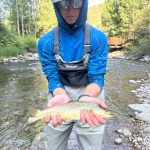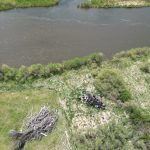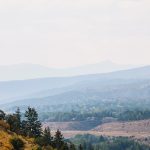Vail Curious Nature column: Resourceful plants thrive in the mountain forest
Curious Nature

Rick Spitzer | Special to the Daily |
As the heat of summer begins to cool and hours of sunlight shorten, you’ve probably noticed the dwindling numbers of colorful wildflowers on your hikes. While the dazzling colors of summer may be giving way to the unique sounds, smells and color palette of fall, there are still a few plants that can spark your curiosity with their unique niche in nature.
Pine drops are distinctive plants that grow in the cool understory of coniferous forests. This tall (up to three feet), alien-looking flower spike stands out in the brush of the forest with its deep-pink stalk and off-white to yellow, urn-shaped flowers. Looking at it, you probably wouldn’t be surprised that this is a parasitic plant. However, today’s scientists understand that no plant is capable of directly taking nutrients from host plants. So with no chlorophyll to convert sunlight into energy, and no way of taking nutrients from a host, how is this plant able to survive?
Funky Fungi
As it turns out, pine drops have figured out a way to tap into a mutually beneficial relationship that has developed between conifer roots and a little threadlike fungus within the soil. The mycelia are a fungus that acts like thin, threadlike roots for the tree, covering more ground and soil area than the tree’s regular roots could hope to cover.
This fungus absorbs water and other nutrients for the tree, and in exchange, the tree gives the mycelia carbon, allowing it to grow within the soil since it doesn’t have any energy-producing segments above ground. Understanding this mutually beneficial relationship between trees and mycelia gives us a better sense of how parasitic plants like the pine drops can grow without much effort on their part.

Support Local Journalism
Pine drops are technically known as myco-heterotrophs, meaning they get all of their nutrition from the fungal mycelia in the soil. Since a mycelium obtains nutrients from the soil and carbon from the tree, through the mycelium, the pine drops have all the resources they need to grow and produce offspring.
Mutually Beneficial Relationship
This specialized parasitic relationship is called epiparasitism, where the pine drops take resources from the mycelium fungus that has, in turn, received resources from its mutually beneficial relationship with the conifer trees.
With such a beneficial relationship, it’s no wonder there are other local plants in the valley that have evolved to function in a similar relationship.
Another plant that goes by the name of ghost plant, Indian pipe,or corpse plant is also myco-heterotrophic. These small, white plants grow in clusters 10 to 30 centimeters tall. The absence of energy-producing chlorophyll leaves these plants with a striking translucent, almost ethereal white coloring.
A Free Ride
Surprisingly, as many as 95 percent of plant species have some direct relationship with or are absolutely dependent upon the presence of mycelia, making it a little-known but extremely important piece of an ecosystem. If you’re lucky enough to happen upon either of these unusual plants on your next hike, then take a second to appreciate how precisely adapted these plants are. In a world where there is constant competition for resources, they have essentially figured out how to get a free ride.
Austin Balfany is a naturalist at Walking Mountains Science Center in Avon, and he enjoys all kinds of recreation around the valley and loves educating the public about local ecology.










